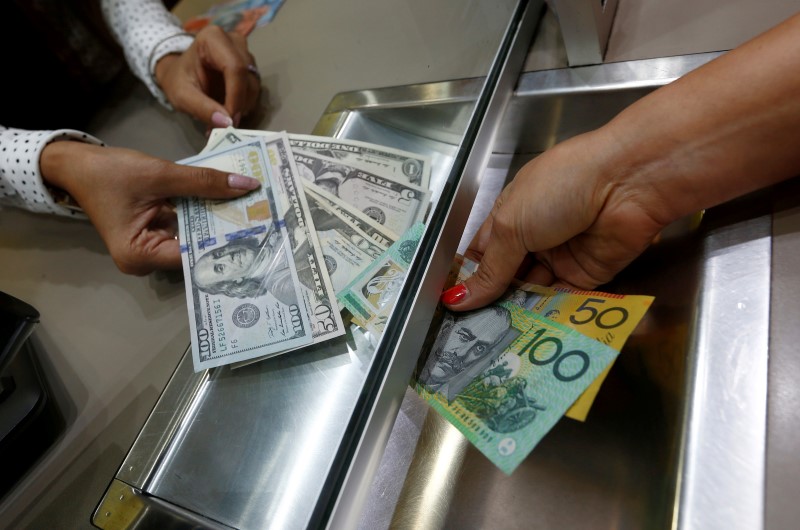Investing.com - The Aussie fell further and the yen remained weaker in Asia on Monday after a sharper drop that expected in machinery orders in Japan, while the Aussie drifted lower despite home loans data in Australia a bit better than expected.
USD/JPY traded at 100.72, up 0.13%, while AUD/USD traded at 0.7542, down 0.40%. GBP/USD was down 0.13% to 1.2935.
In Australia, home loans data for May fell 1.0%, less than the 2.0% drop seen in May month-on-month, along with housing finance figures that rose 3.9% for the same month, reversing a 5.0% decline in April.
Earlier, in Japan, core machinery orders for May slumped 11.7%, sharply more than the 8.7% decline seen year-on-year.
Later Monday, finance ministers from the euro zone are to hold a meeting in Brussels and Kansas Fed chief Esther George is to speak at an event in Missouri.
China reported that the pace of gains in the Consumer Price Index moderated further to 1.9% year-on-year in June because of mainly weaker gains in food prices and at the slowest pace since January, when the National Bureau of Statistics changed the weighting of the basket of goods that make up the index.
Food prices rose 4.6% year-on-year in June, down from a 5.9% increase in May and 7.4% jump in April. Pork prices, the biggest driver of consumer inflation in the past few months, rose by 30.1% year-on-year, down from 33.6% year-on-year in May.
The data suggests that China is in a sustained period of moderate inflation even as Worries about deflation have dissipated, making it less likely that the People's Bank of China will resort to aggressive monetary easing to support the economy.
The U.S. dollar index, which measures the greenback’s strength against a trade-weighted basket of six major currencies, rose 0.10% to 96.41.
Last week, the dollar ended broadly lower against the other major currencies on Friday as prospects for another interest rate hike by the Federal Reserve this year remained dim despite a much stronger-than-expected U.S. jobs report for June.
The Labor Department reported that the U.S. economy added 287,000 jobs last month, well above the 175,000 jobs forecast by economists.
Average hourly earnings were up 2.6% compared with a year earlier.
But the report also showed that the unemployment rate ticked up to 4.9% and May’s payrolls figure was revised down to 11,000 from a previously reported 38,000, the smallest monthly increase since 2010.
The strong jobs report was seen as unlikely to alter the Fed’s cautious plans for raising interest rates.
But the outlook for the pound remained to the downside ahead of what will be a closely watched monetary policy announcement by the Bank of England on Thursday. The Bank of Canada is also to hold a monetary policy meeting in the coming week, with no changes to monetary policy expected.
Markets will also be looking ahead to data on second quarter growth out of China on Friday, as well as U.S. figures on consumer inflation, retail sales and consumer confidence the same day.
